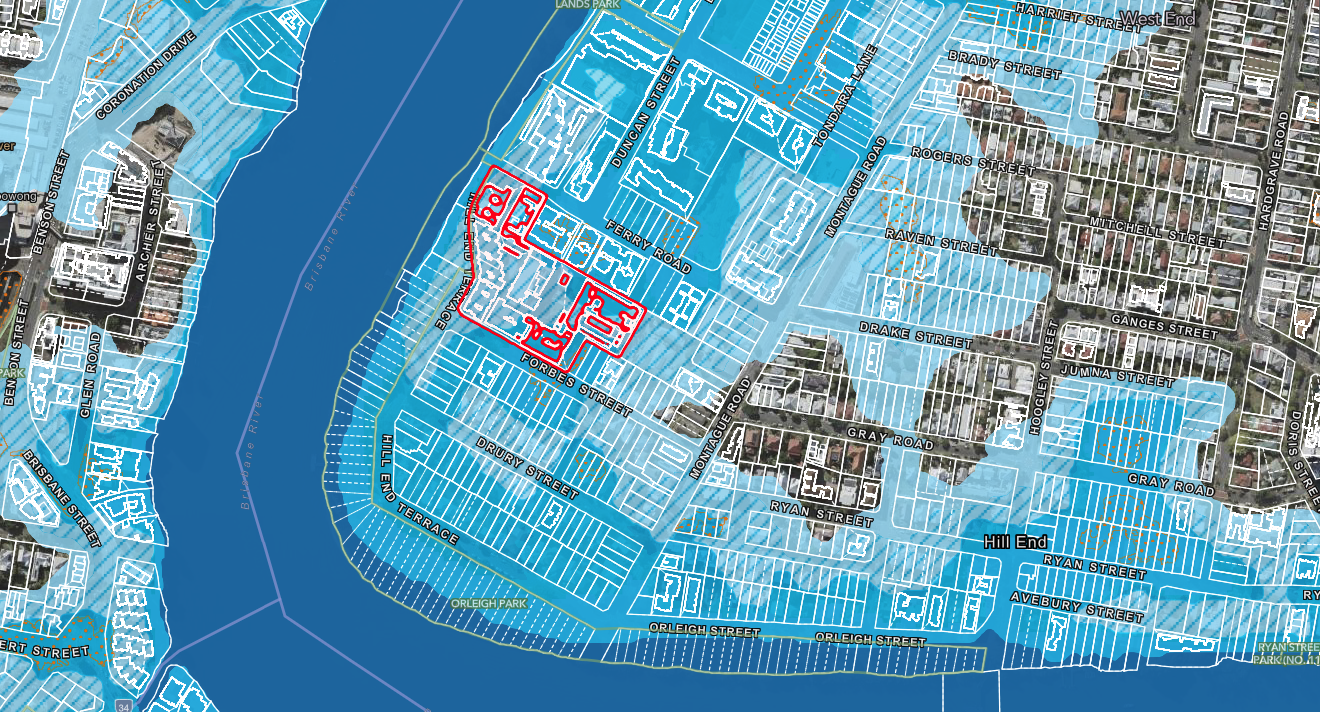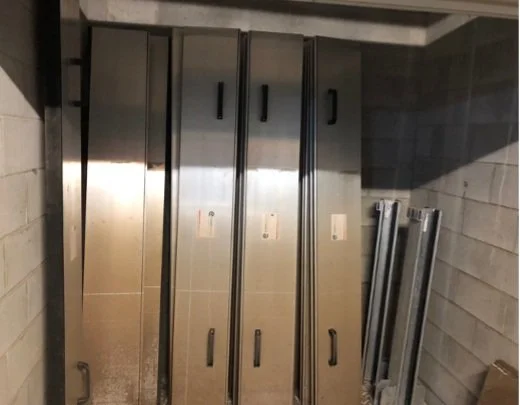Cautionary tales from Riverpoint Apartments
15 February 2024
As more and more apartment dwellers get to know how their buildings respond to flood events, there are lessons and tips to be shared as we all take steps towards mitigating future impacts.
Adrian Sains is a civil engineer, West End local since 2015 and resident at Riverpoint Apartments. Learn from Adrian and his Body Corporate’s experiences as they grappled with the impact the 2011 and 2022 floods have had on the Riverpoint Apartments community, and some of the steps being taken to enhance their flood resilience.
Riverpoint Apartments are located between Ferry Road and Forbes Street, adjacent to the Brisbane River. The development is comprised of 10 buildings, with 331 apartments and over 700 residents. It’s a complex development, built over a basement podium that spreads across the entire three hectares. This makes it challenging to manage in an emergency, particularly if you are ill-prepared.
Our apartment basement flooded in both the 2011 and 2022 events.
We have learnt a great deal about how floods impact our building and our residents, and hope that our short stories will support other apartment dwellers and body corporate’s to safely prepare, respond and recover from future floods.
Much of our resources have been captured in Resilient Kurilpa’s Apartment Toolkit and are free for others to adapt and apply to their own situations.
Reliable power supply is critical to avoiding costly damages and significant impacts to residents.
Early on Sunday 27th February 2022, Energex cut power supply to Forbes Street and two of Riverpoint’s three transformers without notice.
Our building lost mains power while all 15 of our lifts were at the basement level, due to residents moving their personal possessions to higher ground.
This led to significant repair costs which may have been avoidable with better planning. Prior notification could have significantly mitigated this damage, allowing us to lock off our lifts above flood level before the power outage.
Knowing that power supply will be cut also highlights just how little time there is to remove cars and possessions from vulnerable basements, and before pumping capability or emergency lighting may be compromised.
Don’t underestimate the effect on residents of having no power for (in our case) 7 days or more. The impact of having no power for the fridge, freezer, hot water, aircon, internet, electrical appliances, TVs, and lifts varies for each individual. Elderly and mobility-impaired residents are often challenged the most.
Know your pumps before it floods.
After the 2011 flood inundated our basement carparks, back-up pumps were installed to provide emergency pumping if power supply failed to existing 12 electric submersible pumps.
The back-up pumps were compressed air powered diaphragm pumps and were installed with a diesel fuelled compressor.
When the diaphragm pumps were switched on we found that the compressed air supply fluctuated. Consequently, the pumps and associated pipes shuddered, vibrated and functioned poorly. The joints and pipes separated and the pumps eventually failed.
Our attempts to restore function, working in sewage contaminated water, were unsuccessful and at least one of the workers subsequently suffered from a bout of gastro.
The pump that failed.
In a post-flood review, we found that there had been some maintenance of the compressor and pumps, however, there hadn’t been any trials or training on their operation. Excessive pressures in the pump and pipework ultimately caused the failure.
The pumps have now been replaced with electrical pumps powered from mains electricity or a diesel generator, removing our reliance on Energex power supply to manage water in the basement.
These pumps will outlet direct to the flooded street and river, not via flooded pipes and gulleys, and are therefore very efficient. They can also be tested routinely in a purpose built temporary tank.
Our high capacity flood pumps are only required if the sump pumps fail.
The image below shows the area the pumps are located where we will have a controlled reservoir, should the existing 12 electric submersible pumps fail to control water inflow. Under emergency conditions, these 12 pumps now also have power supply from the one transformer that was not turned off by Energex or from a generator if that transformer is also turned off.
This enables Riverpoint to manage inflows from our stormwater harvesting tanks (collecting roof water and overflowing to the basement) and mitigate the impacts of groundwater by allowing a partial flooding of the lowest basement area.
Further, maintenance of the pumps and generator, as well as operational training, are now part of our building’s Flood Mitigation Plan.
Our pumps are located in a controlled reservoir.
Understand the health and safety aspects of your building’s infrastructure.
As the water level dropped post flood in 2022, the Riverpoint team started up the fire hoses to commence the silt clean up.
No one knew that the lack of electrical power supply would result in the automatic start-up of the generator which powered the fire hose pumps.
As this generator was under water it caused a minor explosion which filled the entire basement with black diesel smoke and a rapid evacuation!
Maintain and store flood planks correctly.
After the 2011 flood, Riverpoint invested in flood planks to enhance flood protection at the Forbes Street entrance.
As the water levels rose and reached the lip of the entrance ramp, the body corporate became aware that the flood planks may need to be installed.
However, it was too late. The planks were stored in the already flooded basement! When the planks were located after the clean-up, the bolts and clamps to fix the posts were missing and no training had been provided on the installation.
All planks and flood response equipment is now stored in a dedicated room above flood level.
Flood planks.
Know your building and make a plan before it floods.
There were many other operational issues similar to these cautionary tales that had impacts on the Riverpoint community. Learning about your building before it floods will mitigate loss, stress, health risks, and other unforeseen events.
Residents, body corporates, building managers, and developers located in flood zones must take seriously the risk of flood impacts on community and property.
Creating and adopting a robust Flood Mitigation Plan is a significant step that can help your residents and building be more resilient in future floods.
Adrian Sains is a civil engineer and member of Resilient Kurilpa.







